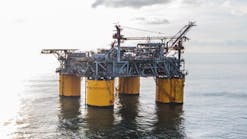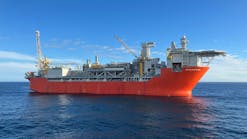These are the projections of Chem Systems Inc. (CSI), Tarrytown, N.Y., published in a recent report on petrochemical feedstocks.
CSI predicts naphtha demand for petrochemicals will grow an average 5.2%/year through 2005, while overall naphtha demand will increase only 2.8%/year. This difference is due mainly to differences in expected demand for end products.
Chem Systems predicts that ethylene demand will increase 4.9%/year during 1996-2005 and propylene demand will grow 5.7%/year. For the same period, benzene demand will increase 4.5%/year and paraxylene demand 6%/year.
In contrast, demand for motor gasoline is expected to rise only 2.1%/year during 1996-2005.
Supply
Despite increased demand for naphtha, supplies are expected to be adequate for a number of reasons."Heightened global demand for olefins and aromatics would imply a tightening of naphtha supplies," said Chem Systems. (Our) analysisellipse, however, shows that naphtha availability will remain sufficient to meet growing petrochemical demand, since increased supplies of condensate and refinery upgrading will supplement supplies."
Expected changes to LPG supply and demand will have an indirect effect on the use of naphtha for petrochemicals production.
"New oil and gas projects are expected to raise LPG production in Latin America, the Middle East, Africa, Canada, and the U.S. (Gulf Coast)," said Chem Systems. "However, LPG may not necessarily account for a greater proportion of global ethylene production.
"Rising demand for LPG as fuel-particularly in Asia-will compete with crackers for new LPG supplies. In terms of trade, the Middle East remains the largest LPG exporting region, but increased local LPG consumption for petrochemical manufacture in Saudi Arabia may reduce the quantities available for export next year."
Meanwhile, in the natural gas arena, production is expected to be about 35% higher in 2005 than in 1997.
"Higher natural gas production will provide greater opportunities for ethane extraction for cracking, but the volumes will still represent only about 1% of world gas production in 2005," said Chem Systems.
"On the other hand, increases in refinery upgrading capacity around the world will produce additional streams from heavier crude cuts that can be used in the gasoline pool. This will free up more naphtha for use in petrochemicals production."
Copyright 1998 Oil & Gas Journal. All Rights Reserved.


